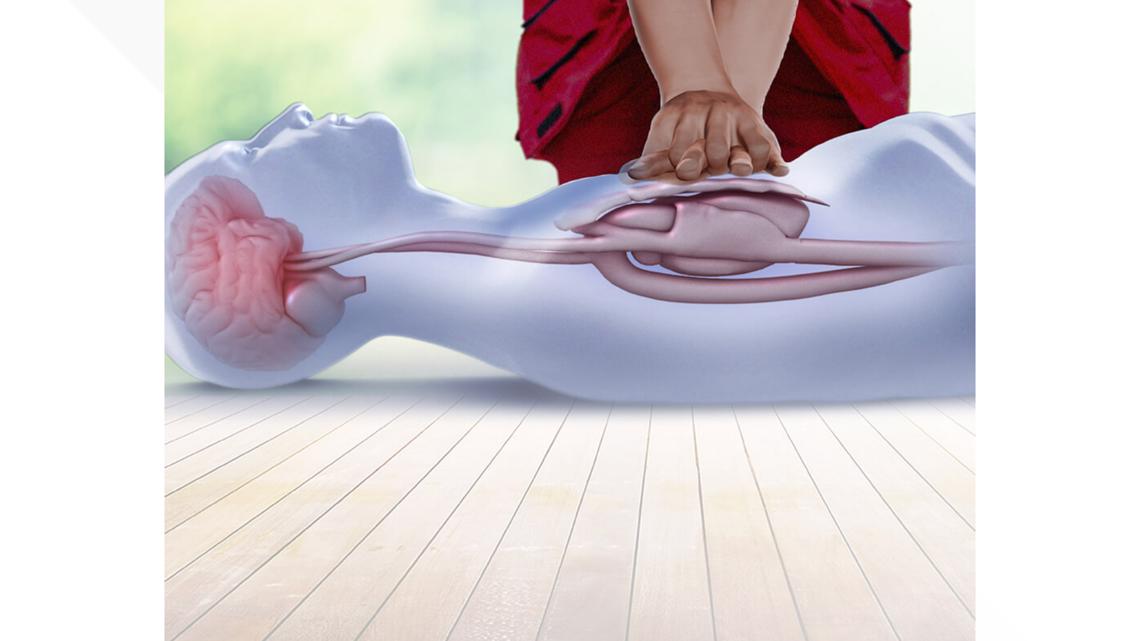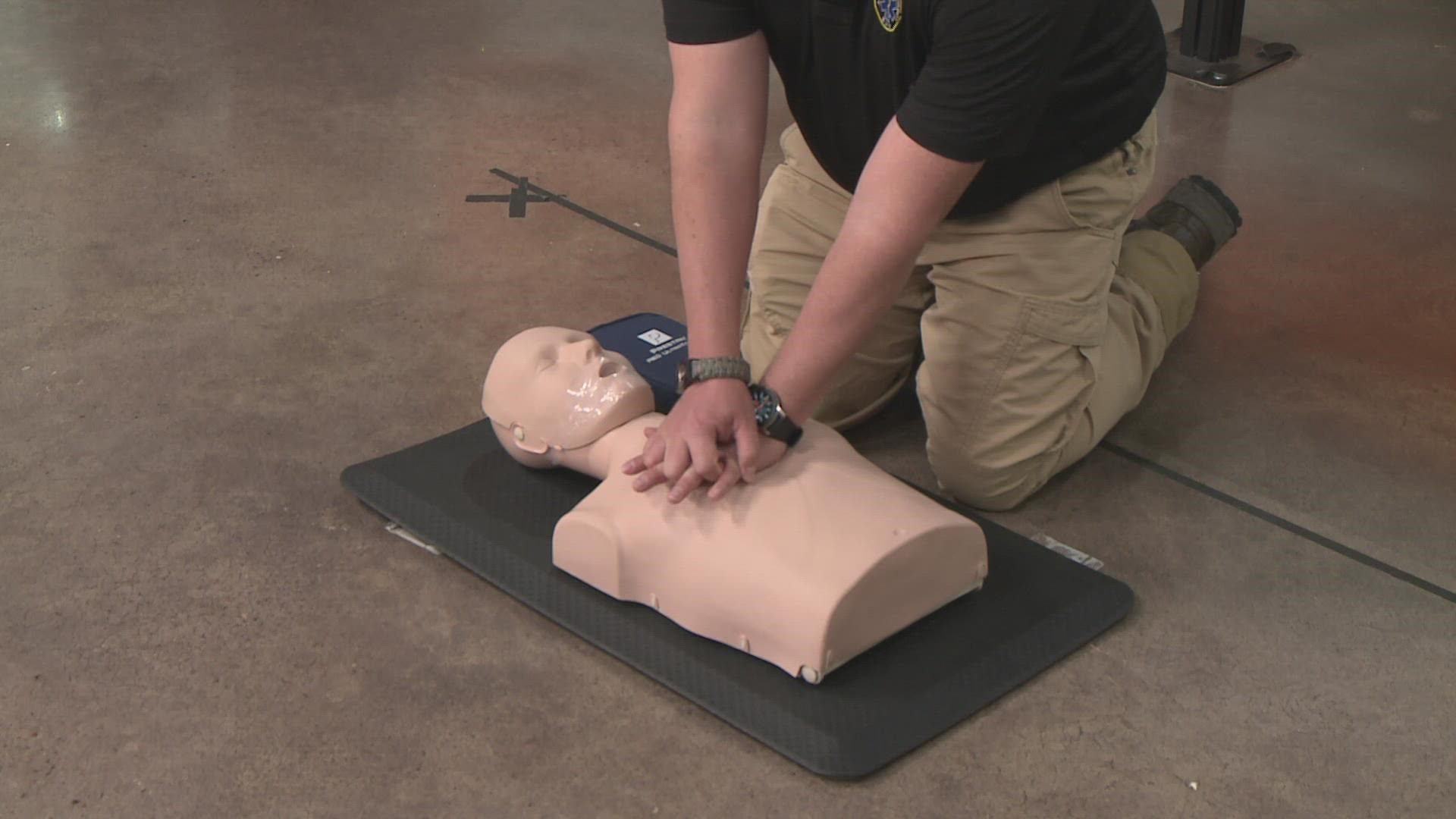AUSTIN, Texas — After the collapse of Buffalo Bills player Damar Hamlin on Jan. 2, more people are wanting to familiarize themselves with cardiopulmonary resuscitation, or CPR.
CPR is a life-saving measure that can be performed when someone's heart stops beating. John Villanueva, CPR program coordinator for Austin-Travis County EMS (ATCEMS), explained the signs people should look for to be ready to act in a medical emergency.
"If somebody goes unresponsive, they're not talking ... see if you can talk to them, call them out," said Villanueva. "See if they're breathing for about 10 seconds, and then just go from there."
If the person is unresponsive to being called out to, call 911 immediately and begin to preform CPR chest compressions with one hand wrapped around the top of the bottom hand that is on top of the chest. Continue performing chest compressions until someone from ATCEMS can take over.
"Hands go right in the middle of the chest," Villanueva said. "Upper part of the chest. Follow up the ribcage is probably the easiest explanation."


Proper chest compressions need to be done at a rate between 120 to 125 compressions per minute. A good way to remember the rhythm for chest compressions is to perform them to the beat of "Stayin' Alive" by the Bee Gees.
When performing CPR chest compressions, it is possible to fracture the ribs because of the level of pressure the chest is receiving repeatedly, Villanueva said.
"It may sound like popping off the knuckles," he said.
Performing CPR can double or triple someone's chances of survival after cardiac arrest, according to the American Heart Association. CPR allows blood flow to continue after cardiac arrest, which extends the opportunity for successful resuscitation when medical personnel arrives.
You don't need to be certified to do CPR – you just need to be educated and know how to do it.
"Compressions are the most important thing to do when someone is in cardiac arrest," Villanueva said.
For people who aren't certified, ATCEMS offers a hands-only chest compressions course. For those who are looking to get certified, the agency adds a ventilation course. Take a look at the full list of courses offered by ATCEMS.
Check out this list for other ways to become CPR-certified in Central Texas.

